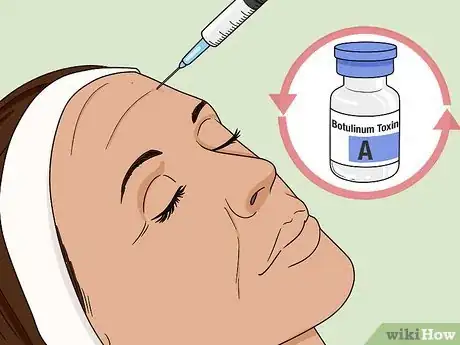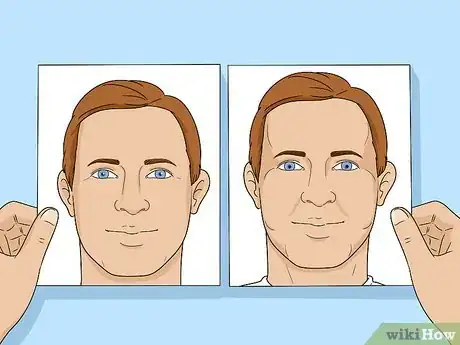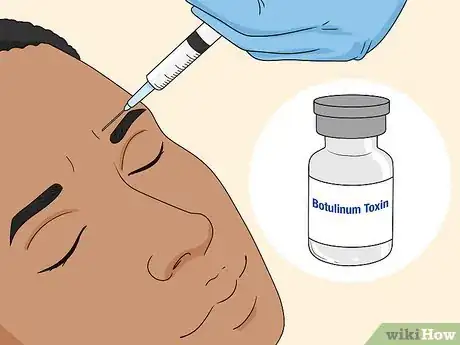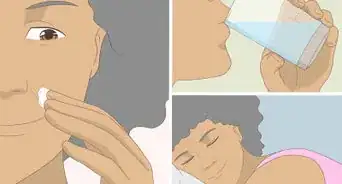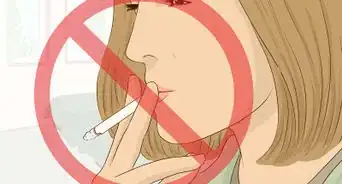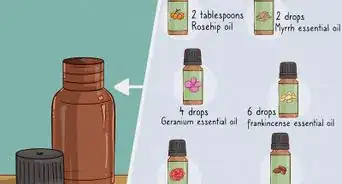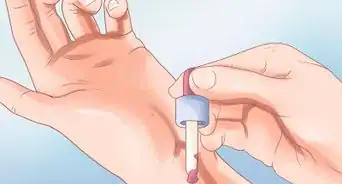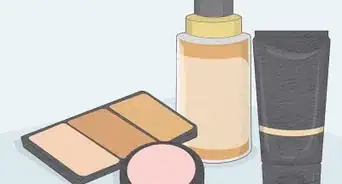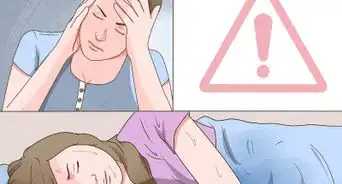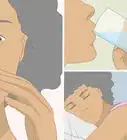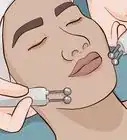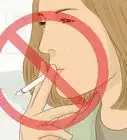This article was co-authored by Adebola Dele-Michael, MD, FAAD and by wikiHow staff writer, Jennifer Mueller, JD. Dr. Adebola Dele-Michael is a Board Certified Dermatologist and the Owner of Radiant Skin Dermatology and Laser, PLLC in Manhattan, New York. With over 12 years of experience, she specializes in general and cosmetic dermatology, specifically, using lasers and energy devices in treating skin of color.She is an assistant professor of Dermatology at The Icahn School of Medicine at Mount Sinai in Manhattan, NYC. Dr. Dele-Michael holds a BS in Biochemistry from Stony Brook University and an MD from The University of Rochester School of Medicine and Dentistry. She completed her Dermatology Residency at Wayne State University School of Medicine, where she was also chief resident.
There are 14 references cited in this article, which can be found at the bottom of the page.
This article has been viewed 10,960 times.
Botulinum toxin resistance is a rare condition you might develop after receiving multiple treatments with various types of botulinum toxin (Botox, Dysport, Xeomin).[1] While only around 1.5% of people who receive injections of botulinum toxin develop the antibodies associated with resistance to it, the condition can be frustrating, especially if you were getting botulinum toxin treatment for pain management. While other treatments might work for you if you have developed a resistance to botulinum toxin, the only true "cure" for resistance is time.[2]
Steps
Background and Causes
-
1Botulinum toxin (BoNT) resistance develops because of the presence of neutralizing or blocking antibodies, which develop secondary to shorter dosing intervals, higher doses per injection cycle & higher amounts of antigenic protein, formulation, manufacturing, and storage of the BoNT. However, studies have shown that other factors contribute to lack of response and include insufficient dose, inappropriate muscle selection, and improper injection technique. [3] Over time, your body might build antibodies that resist the effects of botulinum toxin. If you have these antibodies in your bloodstream, botulinum toxin will no longer have the effect it previously did. Most patients with botulinum toxin resistance had been receiving treatments for a while—resistance is unlikely to develop after a single treatment.[4] BoNT is a complex structure and its analysis helps understand why immunogenicity develops:
- BoNT is composed of a core neurotoxin and associated non-toxic accessory proteins (NAPs).The core neurotoxin consists of a 150 kD inactive precursor protein that contains a 100 kD heavy chain and 50 kD light chain, linked by a disulfide bond.
- NAPs are comprised of hemagglutinin (50 kD) and non-hemagglutinin proteins (130 kD), that associate with the core neurotoxin to help prevent degradation. [5] Xeomin (IncobotulinumtoxinA) is the only product where all NAPs have been removed during the manufacturing. [6]
- Core and NAPs are further mixed with excipient proteins, which vary among different brands, but include albumin, sucrose, lactose, sodium chloride, and disodium succinate.[7]
- Antibodies against BoNT can be broadly divided into neutralizing antibodies (NAbs), targeting the core neurotoxin, particularly the binding site on the heavy chain, and non-neutralizing antibodies, typically targeting accessory proteins or clinically irrelevant sites on the core neurotoxin and which do not affect clinical efficacy.[8]
-
2The following risk factors for the development of neutralizing antibodies (NAbs) have been identified:
- Large doses of BoNT per each injection.
- Large cumulative dose of BoNT over lifetime.
- Certain formulations of BoNT (e.g. RimabotulinumtoxinB)
- Shorter injection intervals, particularly “booster” injections 1–2 weeks after a treatment visit. [9] . There aren't really any other "symptoms" that alert you to botulinum toxin resistance—you simply notice that injections don't achieve the same result that they used to.
Advertisement -
3True resistance is relatively rare. Studies have shown that fewer than 1.5% of patients injected with botulinum toxin developed resistance to it. [10] Even if you get regular treatments, you're still unlikely to develop true resistance.[11]
- Because botulinum toxin can change the structure of the skin around the injection site, frequent injections in the same area might not achieve the same results. However, this doesn't mean that you've developed resistance—it just means that particular location is no longer a suitable site for injection.[12]
-
4Autoimmune disorders may increase your likelihood of developing resistance. While doctors aren't entirely sure why, having a history of autoimmune disorder can make it more likely that your body builds up antibodies to resist botulinum toxin. If you have an autoimmune disorder or have had one in the past, tell your doctor about it before getting botulinum toxin treatment.[13]
- If your doctor thinks it's likely that you'll build up a resistance to botulinum toxin, they might recommend other treatments to achieve the same effect without that risk.
Diagnosis
-
1Compare "after" photos from previous treatments with the current outcome. There aren't really any other symptoms of resistance apart from the treatment not achieving the desired result. If you got botulinum toxin treatment for cosmetic purposes, the easiest way to figure this out is to look at pictures of the treated area before and after previous treatments.[14]
- While your "after" photos won't necessarily look the same after each subsequent treatment, you should definitely be able to tell if the treatment didn't do anything at all.
-
2Talk to your doctor if you think the treatment wasn't effective. If you didn't achieve the desired result, tell your doctor that you think you might have developed a resistance. They'll talk to you about your expectations for the treatment. While your doctor might conclude that you've developed a resistance, there might also be other factors that caused your outcome to be different.[15]
- The fact that botulinum toxin treatment wasn't effective doesn't guarantee that you're resistant. The only thing your doctor knows for sure is that botulinum toxin treatment doesn't work for you.
-
3Get a blood test to check for antibodies. If you want to know for sure if you've developed a resistance to botulinum toxin, your doctor might be able to order a blood test. The blood tests are expensive and not available in all areas. However, this is the only way you can be 100% sure that you have botulinum toxin resistance.[16]
- Structural assays, such as ELISA and immunoprecipitation assays (IPA), are sensitive in the detection of BoNT antibodies, but they are unable to discriminate between neutralizing and non-neutralizing antibodies.
- Bioassays such as the MPA or MHDA utilize animals to identify neutralizing antibodies that impact the clinical efficacy of the toxin. [17]
- Blood testing requires experimentation on lab mice, which raises animal rights issues. If you find this problematic, you might want to skip the blood test.
Treatment
-
1Switch to Type B botulinum toxin. Type A is the most frequently used, so if you're not getting the same results after using Type A multiple times, talk to your doctor about switching to Type B. Although this might not make any difference, it worked for some patients.
- At the same time, studies have also shown that patients tend to develop resistance more often and more quickly with Type B than they do with Type A—so if you've already developed resistance to Type A, you're probably going to end up having the same problem with Type B.[18]
- Type B is less potent than Type A, so you can expect the effects not to last as long.[19]
-
2Try injections in a different area. You might be non-responsive to botulinum toxin if you get injections in the wrong muscle or in an inaccessible muscle. If your doctor determines that there's a better site to use, injections there might do the trick for you. Your doctor might also recommend doing injections at a different depth.[20]
- If you still don't get the response you want after a second treatment, it's more likely that you've developed resistance. In any case, wait at least a few years before getting any follow-up treatments.
-
3Wait 4 to 5 years for the resistance to fade. The only true way to overcome resistance to botulinum toxin is to wait for the antibodies to disappear from your bloodstream. Unfortunately, this can take 4 to 5 years to happen. In the meantime, your doctor might recommend other treatments that could achieve a similar result.[21]
- Even after 4 or 5 years, there's still no guarantee that you've completely overcome your resistance and the botulinum toxin will work just as well as it did the first time. However, you have a much better chance of achieving a satisfactory result from the treatment.
Prevention
-
1Switch to a specific type of BoNT that had NAPs removed. Because botulinum toxin is produced from bacteria, it goes through certain purification before it can be injected. Botox (onabotulinumtoxin-A) and Dysport (obabotulinumtoxin-A) manufacturers do not remove non-toxic accessory proteins (NAPs) from the final formula, and this is thought to induce an immunogenic response. Xeomin (Incobotulinumtoxin-A), is a more pure botulinum toxin derivative where NAPs that might stimulate your immune system to respond, developing antibodies to resist the toxin have been removed.[22]
- Ask your doctor what brands they use and which contain the most purified botulinum toxin. If you're concerned about developing resistance, you might want to switch to Xeomin as it doesn't have NAP proteins.[23]
-
2Use as little botulinum toxin as possible to achieve the desired result. Ask your doctor to personalize your treatment so that they're only using the minimum amount of botulinum toxin necessary. If you're using botulinum toxin treatment for aesthetic purposes, this also means minimizing the injection points.[24]
- You can also try using a smaller amount, then coming back a week later for a touch-up. That way, your doctor knows that they're using the absolute least amount possible.
-
3Wait 6 months in between treatments. Leaving 6 months between treatments reduces the buildup of botulinum toxin, which makes it less likely that you'll develop resistance. If you can't wait that long, try to wait at least 3 months at a minimum.[25]
- If you visit your doctor for touch-ups after treatment, wait at least a week after the initial treatment. Don't go back for another touch-up—instead, wait for your next treatment. If the first treatment wasn't effective, your doctor can adjust the next treatment so it has a better effect.
Warnings
- Many people who think they've developed resistance simply had unrealistic expectations for the outcome of treatment. Talk to your doctor before treatment and make sure you understand the likely outcome.⧼thumbs_response⧽
References
- ↑ https://media.allergan.com/actavis/actavis/media/allergan-pdf-documents/product-prescribing/20190626-BOTOX-Cosmetic-Insert-72715US10-Med-Guide-v2-0MG1145.pdf
- ↑ https://labmuffin.com/resistance-to-botox-what-it-is-and-how-to-avoid-it/
- ↑ http://www.ncbi.nlm.nih.gov/pubmed/27113604
- ↑ https://www.intechopen.com/books/neurotoxins/resistance-to-botulinum-toxin-in-aesthetics
- ↑ http://www.ncbi.nlm.nih.gov/pubmed/27852103
- ↑ http://dx.doi.org/10.2147/BTT.S14902
- ↑ http://www.ncbi.nlm.nih.gov/pubmed/27852103
- ↑ http://dx.doi.org/10.1080/08820139.2017.1368544
- ↑ https://pubmed.ncbi.nlm.nih.gov/26467676/
- ↑ http://dx.doi.org/10.1016/j.baga.2017.06.001
- ↑ https://media.allergan.com/actavis/actavis/media/allergan-pdf-documents/product-prescribing/20190626-BOTOX-Cosmetic-Insert-72715US10-Med-Guide-v2-0MG1145.pdf
- ↑ https://www.professionalbeauty.com.au/anti-ageing/botox-resistance-is-real-%E2%80%92-and-its-growing/
- ↑ https://www.intechopen.com/books/neurotoxins/resistance-to-botulinum-toxin-in-aesthetics
- ↑ https://www.intechopen.com/books/neurotoxins/resistance-to-botulinum-toxin-in-aesthetics
- ↑ https://www.intechopen.com/books/neurotoxins/resistance-to-botulinum-toxin-in-aesthetics
- ↑ https://www.intechopen.com/books/neurotoxins/resistance-to-botulinum-toxin-in-aesthetics
- ↑ http://dx.doi.org/10.1136/jnnp.66.5.612
- ↑ http://dx.doi.org/10.1007/s12640-015-9565-5
- ↑ https://www.intechopen.com/books/neurotoxins/resistance-to-botulinum-toxin-in-aesthetics
- ↑ https://nursing.ceconnection.com/ovidfiles/00006527-201701000-00007.pdf
- ↑ https://www.professionalbeauty.com.au/anti-ageing/botox-resistance-is-real-%E2%80%92-and-its-growing/
- ↑ https://labmuffin.com/resistance-to-botox-what-it-is-and-how-to-avoid-it/
- ↑ http://dx.doi.org/10.1007/s12640-015-9565-5
- ↑ https://www.intechopen.com/books/neurotoxins/resistance-to-botulinum-toxin-in-aesthetics
- ↑ https://www.intechopen.com/books/neurotoxins/resistance-to-botulinum-toxin-in-aesthetics
- ↑ https://labmuffin.com/resistance-to-botox-what-it-is-and-how-to-avoid-it/
